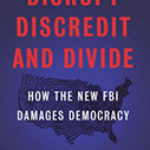No Place On The Corner: The Costs Of Aggressive Policing

Author: Haldipur, Jan
Publisher: New York: New York University Press, 2019. 199p.
Reviewer: David Schultz │ July 2020
Attitudes toward police and policing depend often on one’s race and class. To be white and middle class the sight of a police car or badge can be very assuring. Seldom does one view the police as a threat, to be feared, and demanding that when they show up one should run. Yet to be a poor person of color, police are something to be feared. They are a constant presence in life, hassling you for standing on corners, shopping in stores, or simply looking suspicious, whatever that means. To be a person of color means to live a life of police searches and stops. Describing this latter world is the subject of Jan Haldipur’s book.
No Place on the Corner is a story of the lives of ordinary people of color living in the Bronx, New York. It is the story of how, in part inspired by the broken windows theory of crime, New York City Mayor Michael Bloomberg and his police department launched aggressive police tactics to stop and search individuals. Pretextually, the U.S. Supreme Court’s Terry v. Ohio, 392 U.S. 1 (1968), gave police the authority to stop and frisk individuals whom they suspected of crimes in order to determine if suspects had guns. But under Bloomberg the aggressive policing twisted into a broad mandate for police to stop anyone suspected of a crime, and to use Terry as a way to perform searches. Except it was not just anyone who was stopped–people of color bear the heavy burden of aggressive policing and for years the policy continued to inflict undue imposition on them until a federal judge in 2013 halted this practice as being unconstitutional.
The research for this book concentrated on the 40th, 42nd, and 44th police precincts in the western area of the Bronx. Reports indicated this area to have one of the most prolific uses of aggressive policing, occurring in areas also with high concentrations of racial minorities. Haldipur interviews residents in these precincts, seeking to understand their attitudes toward police, policing, and what it is to live daily with aggressive stops and searches. The stories are telling and frightening– suggesting a world of humiliation and where simply being a person of color appears to make you a suspected criminal.
Overall, the book tells of how fear of the police has become a way of life. For many seeking to avoid random searches and stops, they seek, as chapter one describes, to become invisible. They no long venture outside or group together with friends in public places because that would invite police scrutiny. Or even walking alone, or to school, work, or home, or at normal or unusual houses, invites police stops. The police interactions are often farcical, with officers claiming the person looked like a suspect for something, often for incidents that never even occurred.
Another aspect of aggressive policing is parenting. To be a parent means worrying constantly that a child will be stopped or arrested in aggressive policing, often simply for pretextual reasons such as laughing at an officer or rationally running from them out of fear. But as a parent, many told the author stories of coming home from the store, only to be stopped and frisked in the presence of one’s children. The message sent both to the parent and children, is one of intimidation and of intentional degradation.
The overarching thesis of this book is that while residents in these neighborhoods had legitimate concerns about crime and a need for police, those police were more often than not a source of neighborhood and personal destruction. The impact of aggressive policing, broken windows, and other get tough on crime tactics was to damage neighborhood social capital, sow distrust between residents and police, and impose a racially inequitable burden upon people of color. All of this occurred with minimal evidence that it reduced crime or improved public safety.
No Place on the Corner is a solid example of ethnographic social science research when it comes to explaining the culture created under Bloomberg’s police. It is a reminder that enhanced policing policies have consequences, often other than those necessarily intended or anticipated.
David Schultz, Professor, Department of Political Science, Hamline University, St. Paul, MN, 55104. Dschultz@hamline.edu.


